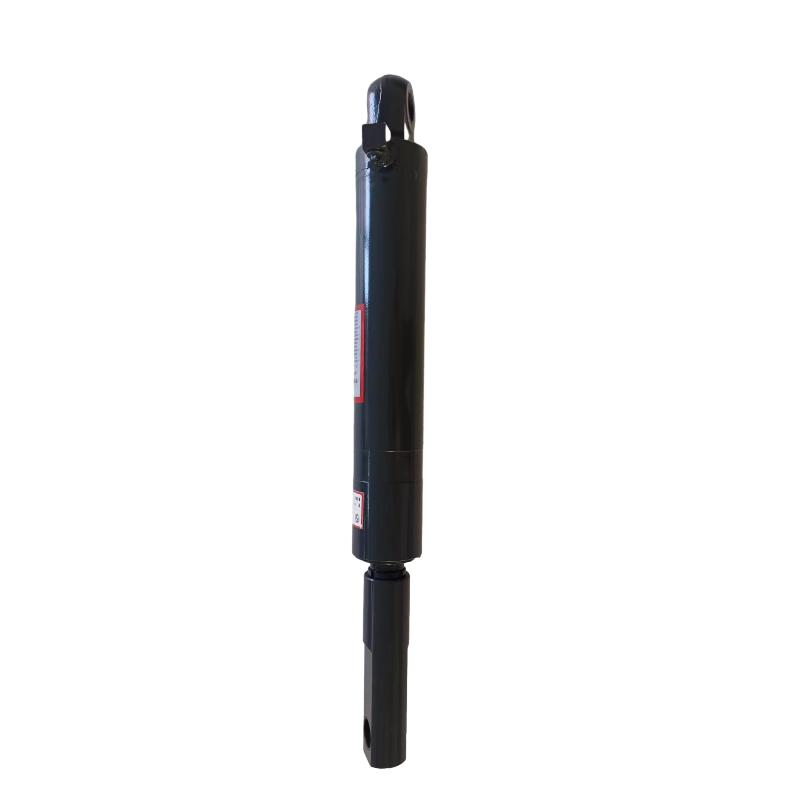Jul . 27, 2024 18:05 Back to list
Ford Tractor Hydraulic Cylinder Solutions for Enhanced Performance and Durability in Agricultural Applications
Understanding Ford Tractor Hydraulic Cylinders Functionality and Importance
Hydraulic cylinders are critical components in the operation of heavy machinery, including Ford tractors. These powerful implements transform the hydraulic energy from the tractor’s hydraulic system into mechanical force. Understanding their function, advantages, and maintenance can greatly enhance the performance and longevity of your agricultural equipment.
What is a Hydraulic Cylinder?
A hydraulic cylinder is a mechanical actuator that converts hydraulic energy into linear motion. In the case of Ford tractors, these cylinders are utilized for various applications, including lifting, pushing, or pulling attachments such as plows, loaders, and backhoes. The basic components of a hydraulic cylinder include the cylinder barrel, piston, rod, and end caps. When hydraulic fluid is pumped into the cylinder, it creates pressure that drives the piston, thereby moving the connected rod and executing the desired task.
The Importance of Hydraulic Cylinders in Ford Tractors
In agriculture, efficiency is key. Ford tractors equipped with hydraulic cylinders can perform multiple tasks with ease, allowing farmers to increase their productivity. For instance, when a hydraulic cylinder is used with a front loader, it enables quick lifting and lowering of material, whether it be soil, hay, or feed. This capability saves time and labor, allowing farmers to focus on other essential tasks.
Furthermore, hydraulic systems are generally easier to control than mechanical systems
. The responsiveness of hydraulic cylinders allows for precise movements when operating implements, which can be especially beneficial during delicate tasks such as planting or precision tilling.Choosing the Right Hydraulic Cylinder
ford tractor hydraulic cylinder product

When selecting a hydraulic cylinder for your Ford tractor, it's essential to consider several factors. The size and capacity of the hydraulic cylinder need to match the specifications of your tractor and the implements you intend to use. An undersized cylinder might struggle to perform properly, while an oversized one could lead to unnecessary stress on the tractor’s hydraulic system.
Additionally, the type of cylinder—single-acting versus double-acting—should be chosen based on the application. Single-acting cylinders use hydraulic pressure for one direction of movement, which is often suitable for lifting actions. In contrast, double-acting cylinders can exert force in both directions, making them more versatile for various applications.
Maintenance Tips for Hydraulic Cylinders
Proper maintenance of hydraulic cylinders is crucial to ensure their longevity and reliability. Regularly inspect the cylinders for leaks or signs of wear, and keep them clean to prevent contamination of the hydraulic fluid. It's also important to monitor the hydraulic fluid levels and replace the fluid as recommended by the manufacturer.
Another essential aspect of maintenance is checking seals and fittings for damage or wear. Poor seals can lead to fluid leaks, which not only impede performance but can also lead to expensive repairs if left unaddressed. Additionally, ensuring that the cylinder is properly lubricated can help prevent rust and degradation of internal components.
Conclusion
In summary, Ford tractor hydraulic cylinders are indispensable tools that significantly enhance agricultural efficiency. By converting hydraulic energy into linear motion, they enable farmers to perform a variety of tasks with precision and ease. By understanding the functionality, importance, and maintenance of hydraulic cylinders, users can ensure that their Ford tractors operate at peak performance, maximizing productivity and reducing downtime in the field. As technology continues to advance, these hydraulic systems will likely play an even more vital role in modern farming, making it essential for operators to stay informed about their care and best practices.
-
Fork Lift Power Units - Hebei Shenghan | Efficiency, Reliability
NewsJul.13,2025
-
1.5-Ton Turbocharged Cylinder-Hebei Shenghan|Hydraulic Solution,Energy Efficiency
NewsJul.13,2025
-
Auto Hoist Power Units-Hebei Shenghan|Efficiency&Industrial Lifting
NewsJul.13,2025
-
Double Acting Power Units-Hebei Shenghan|Hydraulic Solutions,Industrial Efficiency
NewsJul.13,2025
-
1.5 Ton Lifting Cylinder 70/82-40-290-535 - High-Performance Hydraulic Solution | Hebei Shenghan
NewsJul.13,2025
-
Fork Lift Power Units - Hebei Shenghan | Efficiency&Reliability
NewsJul.13,2025
